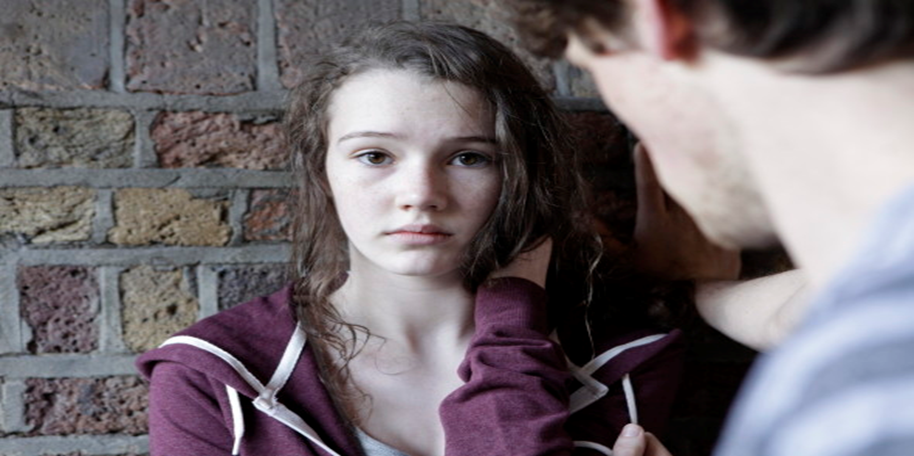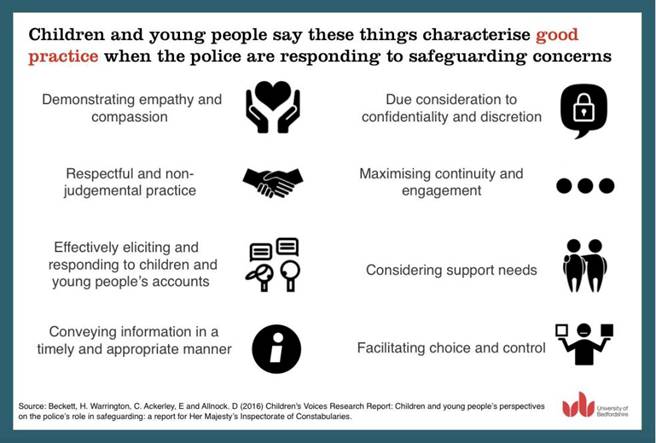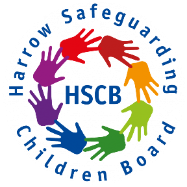Child Sexual Exploitation (Children and Young People)
What is sexual exploitation?
Child sexual exploitation (CSE) is a type of sexual abuse in which children are sexually exploited for money, power or status.
Sexual exploitation can involve swapping sexual favours for drugs, alcohol, cigarettes, and other presents. Or it may be having sex for money with several adults. Young people may feel they must have sex because an adult gives them something, or because they feel threatened or frightened.
Some young people may want to have sex because they think the adult is their boyfriend or girlfriend. In reality, they are being used for sex, and the “boyfriend” or “girlfriend” may pass them on to other people too. (Remember sexual abusers can be women, as well as men.)
Sexual exploitation can also occur without any physical contact with children being groomed to post sexual images of themselves online or take part in sexual activities via webcam or smartphone.
Abusers and groomers are very manipulative and often a young people will not recognise that they are being sexually exploited
Sexual exploitation can happen to boys and young men as well as girls and young women. It can happen to a person of any background, race, ability, sexuality, and age.
We know from experience that some grown-ups target young people and draw them into abusive sexual relationships. This is how it works:
- Older adults show the young person a lot of interest and affection at the beginning, and make them feel special
- Sometimes they ask groups of young people to come back to their house or parties with other adults, which makes the child feel grown up
- They are offered drugs and alcohol, and a place to chill out
- The young people may get presents like clothes, a mobile phone, or money to buy alcohol and cigarettes
- After the grown-up has gained the young person’s trust and affection, things change
- They will ask for sexual favours for themselves or other people, in return for alcohol, drugs, presents, money all the things they started giving for free.
- They stop being nice and can become threatening or violent.
This report looks at the progress that has been made in trying to stop child sexual exploitation in England since our Inquiry in 2011-2013.

If you or someone you know is affected by child sexual exploitation, your priority should be to get help as soon as you possibly can.
The person concerned may be worried about not being believed, or being judged. It’s important to remember that child sexual exploitation is never their fault, no matter how or why it happened.
Child sexual exploitation is a crime and there are several organisations, including Barnardo’s, that have special, expert services that can help those affected.
If you believe a child is in immediate danger, call the police on 999.
If you would like to report any concerns, please contact Crimestoppers on 0800 555 111.
We understand it can be scary to come forward about child sexual exploitation, and it’s hard to know who to trust. Our expert staff can provide a safe, confidential environment, so victims can get all the help they need.
Barnardo’s is committed to helping young people break away from abuse, so they can look forward to the bright and exciting future they deserve.
What does Zipit do?
If someone’s trying to get you to send them naked images of yourself, use the images on Zipit to keep the situation in control.
Zipit helps you get flirty chat back on the right track. It’s packed with killer comebacks and top tips to help you stay in control of your chat game.
- Save images onto your device and share them with your friends!
- Share images on Facebook, Twitter, BBM or via email.
- Find out how to deal with a sexting crisis.
- Get advice to help you flirt without failing.
- Call ChildLine or save the number to your phone.
You can also share images from Zipit through other apps like Whatsapp or Instagram, depending on what kind of phone you have and what apps you have on your phone.
Free app/ free downloads https://www.childline.org.uk/Play/GetInvolved/Pages/sexting-zipit-app.aspx
Barnardo’s
Barnardo’s provides a range of services to children, young people and families across the UK. Services address problems including sexual exploitation, substance misuse and homelessness,
Visit the Barnardo’s CSE website
ChildLine
Free, confidential 24-hour helpline that offers support for any kind of problem.
Tel: 0800 11 11
NSPCC
Child protection helpline gives information, advice and counselling to anyone worried about a child.
Tel: 0808 800 5000
Children and young people’s perspectives on the police’s role in safeguarding
Over the summer of 2015 researchers from the International Centre asked 45 children and young people across England, who had come into contact with the police because of safeguarding concerns, to tell them what the police did well and what they needed to do better. They were asked to do this work on behalf of Her Majesty’s Inspectorate of Constabulary (HMIC) as part of their child protection inspection programme. A report resulted in which gathered young people’s experiences of criminal justice responses to child sexual exploitation.
So what did they say?
The majority of participants recognised the contribution police could make in terms of ensuring a child or young person’s safety and pursuing perpetrators. The vast majority, however, would not directly approach the police for such support unless in immediate danger, preferring to have this access mediated through an individual they already knew like a trusted friend, family member or professional such as a teacher or a youth worker. Identified barriers to directly seeking help from the police included: being scared of the police; fear of repercussions; a lack of control over the information shared; fear of not being believed or of being treated like a criminal; and previous negative experiences of the police.
There was a lot of things which I did want to go to the police for, but I was just too scared (16 year old young woman)
Most of the children and young people that they spoke to felt that the police don’t always treat young people fairly and that some young people are treated less fairly than others. This can be because of their ethnicity or gender, or because of their, or their family’s, history with the police. This holds clear implications for their propensity to seek, or accept support.
What can change?
The children and young people who took part in the work identified eight key components of an adequate and appropriate response when the police get involved in protecting children and young people from harm. This good practice poster below is good practice for all professionals working with children and young people.

We need to listen to young people, they’re the experts.
In the summer of 2014, Our Voices team at the International Centre partnered with various projects across Europe to run a series of consultations with Youth Advisors across Albania, Bulgaria and the UK. Forty-seven young people, aged 11 to 25, took part in these consultations. The sessions looked at how to prevent sexual violence; what stops young people from talking about these experiences and accessing relevant support. This post highlights some of the messages of the report.
The Youth Advisers identified a number of barriers and challenges that prevented young people from understanding sexual violence and accessing support. These included:
- Lack of information in schools and society
- Failure of safe opportunities to talk about sex
- Shame and embarrassment
- Not being believed or supported
- Fear and being scared
- Not understanding the situation
- Not knowing where to go for help
- Not trusting professionals
- Wanting to forget
- Not understanding the systems
- Lack of confidence in police systems and institutions


